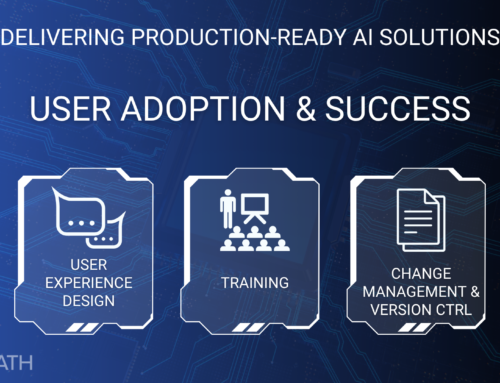A Guide to Using Small Language Models with Retrieval-Augmented Generation
You've probably heard of ChatGPT, Gemini, LLama, Claude AI by now, right? They're the Generative AI (Gen AI) chatbots that seem to know everything and can have surprisingly human-like conversations. People love Gen AI, and it's incredibly powerful. But there's one small problem for businesses: it's typically run on the cloud, meaning your data could be exposed to the internet. And no one wants their proprietary information out there. So, how do you tap into this AI power without worrying about leaks? Enter Small Language Models (SLMs) paired with Retrieval-Augmented Generation (RAG), a safe, local, and super-smart way to harness your company's data.
Let's break it down.
What's a Language Model Anyway?
Think of a language model (LM) as a digital parrot. But instead of just repeating words, it processes tons of text (like entire books, articles, and websites) to learn how people communicate. Then, it can generate its own sentences based on what it's learned. The most famous examples, like ChatGPT, are called Large Language Models (LLMs) because they've read a lot of stuff.
But here's the catch: these LLMs live in the cloud, and when you ask them something, your questions and possibly your data get sent over the internet. For many businesses, especially those handling sensitive data, this is a big no-no.
What's the Deal with Small Language Models (SLMs)?
This is where Small Language Models (SLMs) come in. They work in the same way as LLMs, but on a smaller scale, and the best part? They can run locally—on your company's servers, behind your firewall. This means you're not sending any data to the internet. It stays right where you want it: safely on-premise. While SLMs may not have read every book ever written, they can still be smart enough to get the job done.
What About Retrieval-Augmented Generation (RAG)?
Now, let's throw RAG into the mix. If an SLM is like a clever employee who can draft great emails, RAG is like giving that employee a direct line to your company's database so they can always find the most accurate and up-to-date info. And remember, your data is valuable because it sets you apart from everyone else!
Here's how it works: the language model generates responses, but instead of trying to rely on everything it's read before, it first pulls in relevant data from your own documents. This means it's not guessing based on what it learned from public text—it's consulting your proprietary information. Think of it as having a super-knowledgeable assistant who not only writes well but knows exactly where to find the right answers.
Why SLM + RAG Is Perfect for Your Business
So, why should you care about this SLM + RAG combo? Well, here are a few reasons why it's a game-changer for your business:
- Security: Since everything runs locally, there's no risk of your sensitive data leaking to the internet. Your information stays under lock and key—safe from prying eyes.
- Tailored Responses: The model uses your proprietary documents for answers. So, if you've got industry-specific knowledge or internal processes that make your business tick, the AI will reflect that, giving responses that are actually relevant to your company.
- Cost Efficiency: Smaller models are easier to run and don't require the massive computing power of LLMs. You get the benefits without having to buy a new data center to power it.
- Consistency: By using your company's data, the model stays consistent with your brand voice, processes, and internal knowledge. It's like having an employee who's read every company memo, manual, and case study, and is ready to assist.
- Value: You've invested time and resources into creating valuable documents, reports, and procedures. This AI can mine that information to provide actionable insights, improve decision-making, and enhance customer service. It's like turning your existing data into a goldmine of value, giving you a competitive edge.
Adding Guardrails: Keeping the AI on Track
Now, before you hand over the keys to the AI kingdom, let's talk guardrails and observability. Just like you wouldn't let a new employee dive into every document without some oversight, you need to keep an eye on how your SLM + RAG setup handles your data. Here's what you'll want to monitor:
- Prompt Management: The questions (or prompts) people ask the AI need to be managed. If an employee asks the AI something too vague or sensitive, you don't want it accessing the wrong documents. Clear prompts lead to clear (and safe) answers.
- Document Storage & Retrieval: Your proprietary documents are the lifeblood of this system. Make sure they're stored securely, and that the AI can only access what it's supposed to. Think of this as having different levels of clearance—only authorized documents should be fair game.
- Model Responses: You'll want to keep tabs on what the AI is spitting out. Regularly review the responses to ensure they're accurate, appropriate, and safe. Think of it like quality control—every once in a while, you'll want to audit its work to ensure it's doing what it should.
- Observability Tools: Like monitoring any other system, having the right tools in place to track what's happening under the hood is key. With observability, you can see which documents the AI is accessing, how it's interpreting prompts, and flag any unusual activity. This is especially important for ensuring compliance and protecting sensitive data.
Final Thoughts: AI Without the Headaches
In the end, Small Language Models combined with Retrieval-Augmented Generation (SLM+RAG) offer a powerful, secure, and tailored AI solution for your business. You get the intelligence of a language model without the risks of the internet, and you're tapping into your own company's knowledge in a safe, controlled way.
Think of SLM + RAG as hiring a super-smart, data-savvy employee that never sleeps, always follows the rules, and knows your business like the back of their hand. All you have to do is give them the right tools, set the guardrails, and watch them work. Plus, with everything running locally, your proprietary information remains exactly where it should—locked in your own digital vault.
So, go ahead and unlock the power of AI, without unlocking your company secrets to the world!





